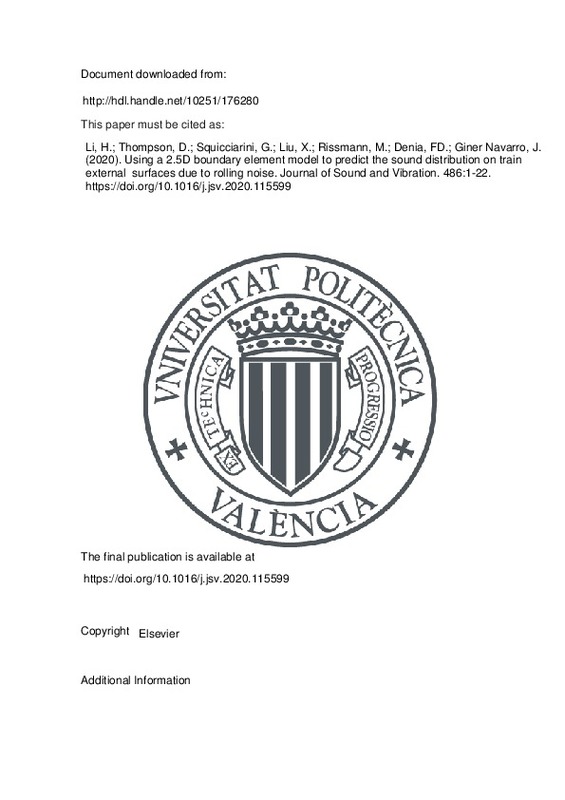JavaScript is disabled for your browser. Some features of this site may not work without it.
Buscar en RiuNet
Listar
Mi cuenta
Estadísticas
Ayuda RiuNet
Admin. UPV
Using a 2.5D boundary element model to predict the sound distribution on train external surfaces due to rolling noise
Mostrar el registro completo del ítem
Li, H.; Thompson, D.; Squicciarini, G.; Liu, X.; Rissmann, M.; Denia, FD.; Giner Navarro, J. (2020). Using a 2.5D boundary element model to predict the sound distribution on train external surfaces due to rolling noise. Journal of Sound and Vibration. 486:1-22. https://doi.org/10.1016/j.jsv.2020.115599
Por favor, use este identificador para citar o enlazar este ítem: http://hdl.handle.net/10251/176280
Ficheros en el ítem
Metadatos del ítem
| Título: | Using a 2.5D boundary element model to predict the sound distribution on train external surfaces due to rolling noise | |
| Autor: | Li, Hui Thompson, David Squicciarini, Giacomo Liu, Xiaowan Rissmann, Martin | |
| Entidad UPV: |
|
|
| Fecha difusión: |
|
|
| Resumen: |
[EN] In order to be able to predict train interior noise, it is first important to calculate the external sound pressure distribution on the floor, sidewalls and roof. This can then be combined with the transmission loss ...[+]
|
|
| Palabras clave: |
|
|
| Derechos de uso: | Reserva de todos los derechos | |
| Fuente: |
|
|
| DOI: |
|
|
| Editorial: |
|
|
| Versión del editor: | https://doi.org/10.1016/j.jsv.2020.115599 | |
| Código del Proyecto: |
|
|
| Agradecimientos: |
The work presented in this paper has received funding from China Scholarship Council and the Shift2Rail Joint Undertaking under the European Union's Horizon 2020 research and innovation programme (grant agreement no. ...[+]
|
|
| Tipo: |
|







![[Cerrado]](/themes/UPV/images/candado.png)


